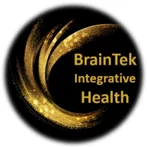
Chapter 2
Unleashing the Power of Thought Journals: A Guide for Lifelong Learners
Introduction
Imagine transforming your thoughts into a powerful tool for self-discovery and growth. Teaching individuals, from teenagers to adults, how to create and effectively utilize a thought journal can unlock profound cognitive, motivational, emotional, and environmental benefits. This isn’t just about writing; it’s about crafting a deeper understanding of oneself through a structured and insightful approach.
Empowering Learning Strategies
1. Cognitive Strategies
Metacognitive Awareness:**
Encourage individuals to delve into their own thinking processes. Prompt them with questions like, “What thoughts are shaping my day? Why do I feel this way?” This reflective practice can unveil patterns in their thinking, enabling them to challenge negative or unproductive thoughts.
Visualization Techniques:
Introduce mind mapping as a powerful tool to visualize thoughts and emotions. By mapping their mental landscape, learners can clarify their priorities and see connections between various ideas, fostering a more organized and insightful thought process.
Chunking Information:
Break down the journaling process into bite-sized, actionable steps. Start with simple tasks such as identifying thoughts, categorizing them, and reflecting on their implications. This approach not only makes the process less daunting but also empowers learners to take control of their mental narratives.
2. Motivational Strategies
– **Goal Setting:**
Guide learners in establishing SMART (Specific, Measurable, Achievable, Relevant, Time-bound) goals for their journaling journey. Not only does this cultivate intrinsic motivation, but it also provides a clear roadmap for tracking progress and celebrating achievements along the way.
– **Self-Reward Systems:**
Introduce a system of rewards for consistent journaling and insightful reflections. By recognizing their own efforts and milestones, individuals reinforce positive behavior, making the journaling process not only productive but also enjoyable.
### 3. Emotional Strategies
– **Mindfulness Practices:**
Integrate mindfulness exercises that help individuals observe their thoughts and emotions without judgment. This practice encourages the quick dismissal of intrusive thoughts, fostering a sense of clarity and calm.
– **Journaling Reflection:**
After engaging with their thought journal, prompt learners to reflect on their emotional responses. This reflection enhances emotional regulation, providing deeper insights into their thought patterns and ultimately leading to greater self-awareness.
### 4. Environmental Strategies
– **Create a Thoughtful Space:**
Encourage the establishment of a dedicated, distraction-free zone for journaling. A serene environment not only enhances focus but also enriches the overall learning experience, making it a more immersive and rewarding journey.
## Conclusion
By embracing the art of thought journaling, individuals can embark on a transformative journey of self-exploration and growth. The strategies outlined here aren’t mere suggestions; they are pathways to a more mindful, organized, and emotionally balanced life. Let’s empower ourselves and those around us to harness the power of our thoughts for a brighter, more intentional future. Start today, and watch as your thoughts evolve into your greatest ally!
This is the heading
Lorem ipsum dolor sit amet, consectetur adipiscing elit. Ut elit tellus, luctus nec ullamcorper mattis, pulvinar dapibus leo.
